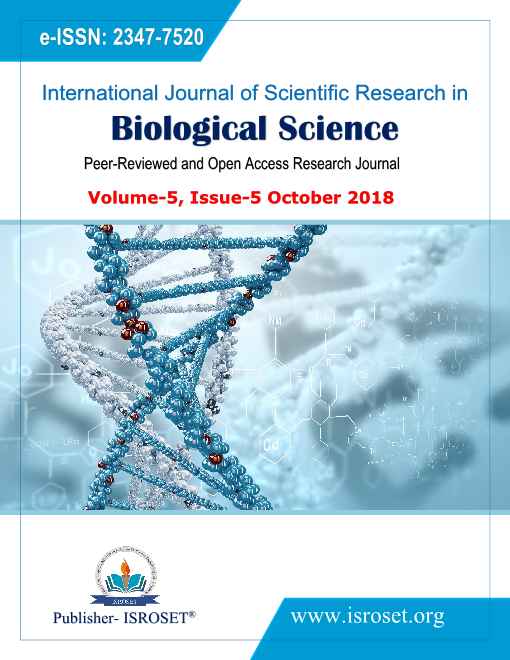Some medicinal plants of Mandsaur district commonly used for the treatment of Snakebite
Keywords:
Snakebite, Tribes, Antiserum, Therapeutic agent, Phytomedicinal DiversityAbstract
Snakebite is a common acute medical emergency faced by tribal and rural populations in Mandsaur district with heavy rainfall and humid climate. Present study deals with 9 plant species belonging to 8 genera and 5 families, used traditionally by Bhil and Bhilala tribes and rural people of Mandsaur district (Madhya Pradesh) for the treatment of snakebite. Achyranthes aspera Linn is the most common plant of Madhya Pradesh and others parts of India used for the treatment of snakebite.
References
R.N. Banerjee, (1978) Poisonous snakes and their venoms, symptomatology and treatment, In: Progress in Clinical Medicine, Second series, edited by Ahuja, MMS, (Heinemann), 136-79.
S.K.. Basha G. Sudarsanam (2012) Traditional Use of Plants against Snakebite in Sugali tribes of Yerramalais of Kurnool district, Andhra Pradesh, India, Indian Pacific Journal of Tropical Biomedicine, 10: 575-579.
H.G. Champion, & S.K. Seth. 1968. A Revised Survey of the Forest type of India. Manager of Publications, Government of India, New Delhi.
J.P. Chippaux (1998). Snakebites: appraisal of the global situation, Bull WHO, 76 515-524.
F.J. Duthie 1960. Flora of the upper gangetic plain and of the adjacent siwalik and sub-himalayan tracts, vol. I & II.
S. Dwivedi (2004). Herbal remedies among tribal and non-tribal Rewa District of Madhya Pradesh. A Ph.D. Thesis submitted to APS University, Rewa.
A. Jain S.S. Katewa, S.K. Sharma, P. Galav & V. Jain (2011) Snake and indigenous snakebite remedies practiced by some tribals of Rajasthan Indian Journal of Traditional Knowledge Vol. 10 (2) pp. 258-268.
S.K. Jain , C.R. Tarafder (1973) Native plant remedies for snakebite among Adivasis of Central India. Ind. med. J. 57: 303-309.
S.R. Kunjam, S.K. Jadhav , K.L.Tiwari (2013) Traditional Herbal Medicines for the Treatment of Snakebite and Scorpion Sting by the Tribes of South Sarguja, Chhattisgarh, India, Med Aromatic Plants, 2: 1.
M. Panghal, V. Arya, S. Yadav S., Kumar, J.P. Yadav (2010) Indigenous knowledge of medicinal plants used by Saperas community of Khetawas, Jhajjar District, Haryana, india, Journal of Ethnobiology and Ethnomedicine, 6:4.
G. Penchalapratap, G. Sudarsanam, R. Pushpan, Prasad G.P (2010) Herbal remedies for Snake bites in Ethnic practices of Chittoor District, Andhra Pradesh, Ancient Science of Life ,Vol. 29: 4, 13-36
J. Sainkhediya, D. K. Aske (2012) Ethno Medicinal Plants used by Tribal Communities for the treatment of Snakebite in West Nimar, MP, India, ISCA Journal of Biological Sciences, Vol. 1 (2), 77-79.
T. Thirumalai, E.K. Elumalai., V. S. Therasa, Senthilkumar and David E.(2010) ethnobotanical Survey of Folklore Plants for the Treatment of Jaundice and Snakebite in Vellore Districts of Tamilnadu, India, Ethnobotanical Leaflets 14: 529-36.
D.A. Warrell (1996) Clinical features of envenoming of snakebite, In: Envenoming and their treatments, edited by Bon C & Goyffon M, (Marcel Merieux), 63-76.
Downloads
Published
How to Cite
Issue
Section
License

This work is licensed under a Creative Commons Attribution 4.0 International License.
Authors contributing to this journal agree to publish their articles under the Creative Commons Attribution 4.0 International License, allowing third parties to share their work (copy, distribute, transmit) and to adapt it, under the condition that the authors are given credit and that in the event of reuse or distribution, the terms of this license are made clear.







